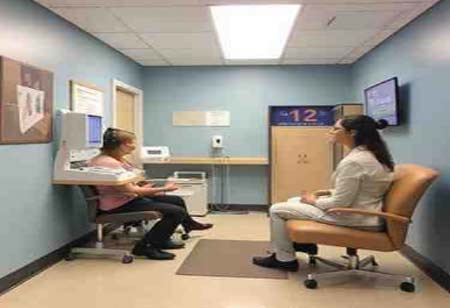Transforming Eye Care: The Role of Technology
Recent advancements in optometry, including artificial intelligence-based tools, sophisticated retinal imaging techniques, and tele-optometry, enhance the precision and accessibility of vision care.

By
Medical Care Review | Friday, November 15, 2024
Stay on top of your health and well-being with exclusive feature stories on the top medical clinics and treatment centers, expert insights and the latest news delivered straight to your inbox. Subscribe today.
The progress made in Optometry has revolutionized eye care, increasing the accuracy of eye examinations and expanding access to services for underserved communities. This article explores some of the latest technological innovations in optometry that can transform vision care.
Fremont, CA: Recent advancements in optometry, including artificial intelligence-based tools, sophisticated retinal imaging techniques, and tele-optometry, enhance the precision and accessibility of vision care. These technological innovations facilitate the early detection and treatment of ocular conditions, thereby improving patient outcomes and broadening access to care for diverse individuals.
Technological Advancements in Optometry
Vision is the primary means we engage with and interpret our surroundings. It is among the most essential senses; however, billions of individuals experience various forms of visual impairment despite its significance. A considerable number of these conditions result in irreversible vision loss, often stemming from insufficient awareness and delayed access to appropriate treatment and care.
Latest Technology in Optometry
Technology in the healthcare sector enhances existing resources, facilitating more efficient and convenient treatment options. In the field of optometry, the introduction of advanced technology is designed specifically to augment the capabilities of practitioners.
OPTOMAP Retinal Examination:
Diseases like glaucoma and retinal tears require early detection to prevent partial or total blindness. Previously, retinal imaging could only visualize 15 percent of the retina.
The innovative OPTOMAM Retinal examination technology now captures 80 percent of the retina and is highly effective in identifying issues. This method is quick, user-friendly, and appropriate for individuals of all ages. The imaging provided by this technology offers doctors valuable insights that may not be obtainable through other means.
Visual Field Assessment:
Your visual field refers to the extent of the area you see when your eyes are open. It encompasses everything your eyes can perceive, both near and far. The sharpest vision occurs in the central part of your visual field. A visual field assessment evaluates your ability to see in various directions—up, down, left, and right—without eye movement.
Additionally, it measures the sensitivity of your vision. This assessment is entirely painless and does not require eye drops. Regular visual field evaluations are essential for individuals diagnosed with childhood astigmatism to monitor the effects on their peripheral vision and overall ocular health.
Optical Coherence Tomography:
OCT is essential for detecting, diagnosing, and managing ocular conditions. This high-resolution imaging technique thoroughly examines the retina's ten distinct layers and various zones. It is a non-invasive and painless procedure that offers high diagnostic accuracy.
OCT scans are instrumental in monitoring disease progression, enabling the early detection of conditions such as glaucoma, macular degeneration, and diabetic retinopathy. By identifying these diseases early, healthcare professionals can create tailored treatment plans that improve patient outcomes.
These are some of the technological advancements in optometry. There are more adding to the above ones. The advancements in Optometry have transformed the field of eye care, enhancing the precision of eye examinations and improving access to care for vulnerable populations. Often, eye conditions do not present symptoms in their early stages, making it difficult to identify issues promptly.
Ophthalmologists recommend annual eye examinations to ensure timely and appropriate treatment. The latest technological innovations have greatly improved the accuracy of clinical decisions and diagnostic results.







